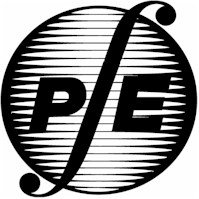Idaho Society of Professional Engineers
Friday Update – 10/27/06
UPCOMING EVENTS:
• October 27, 2006 - PE and PS Examinations - Boise, Idaho
• October 28, 2006 - FS (aka
LSIT) Examination - Boise, Idaho, Pocatello, Idaho, Moscow, Idaho
• October 28, 2006 - FE (aka EIT)
Examination - Boise, Idaho. Pocatello, Idaho, Moscow, Idaho
• December 5, 2006 –
ISPE Southwest Chapter
Noon Meeting (Please note that this is a change from the usual meeting
date. The November and December meetings are being combined for this meeting.)
• February 6 – 10, 2007 –
Idaho Society of Professional Land
Surveyors Conference - Coeur d' Alene Casino - Worley, Idaho
• March 10, 2007 – State
MATHCOUNTS Competition –
Boise State University, Boise
• March 22 & 23, 2007 –
ISPE 2007 Annual Meeting –
Oxford Suites, Boise
• May 11, 2007 – National
MATHCOUNTS Competition –
Convention Center, Fort Worth, Texas

A range of products dealing with consulting start-up to essential communication
skills for engineers
will be on sale next month. A complete listing can be found in November’s PE
magazine or on the
NSPE Web site.
Need End of Year PDH's?
NSPE has lots of ways to pick up those end-of-the-year PDH's. Visit the
education webpage at
http://www.nspe.org/education/ed-home.asp and print a copy of the NSPE
2006-07 continuing education brochures.

MATHCOUNTS PROBLEM OF THE WEEK
Can you solve this MATHCOUNTS problem? The answer will appear in next week's
edition of the Friday Update!
The Pumpkin Patch
Ichabod has searched the pumpkin patches and found 3 “perfect” spherical
pumpkins. He measured and recorded the circumference of each pumpkin. From the
least to greatest pumpkin the circumferences measured 22, 44 and 66 inches. What
is the volume, in cubic inches, of each of the pumpkins? Express your answers as
common fractions in terms of π. (The denominators will contain π)
--------------------------------------------------------------------------------
Ichabod noticed the ratio of the circumferences of the pumpkins was 22:44:66
from the least to the greatest circumference. What is this ratio in its simplest
form?
--------------------------------------------------------------------------------
Ichabod wants to know the ratio of the volumes of the pumpkins from least to
greatest. Help Ichabod out by simplifying the ratio of the volumes of the three
pumpkins from least to greatest?
--------------------------------------------------------------------------------
Ichabod notices a relationship between the ratio of the circumferences of the
pumpkins and the ratio of the volumes of the pumpkins. He has written a
conjecture based on the relationship that allows him to predict the volume ratio
of the spheres if he knows the circumference ratio of the spheres. Ichabod tests
his conjecture with another set of similar solids that are not spheres. He uses
rectangular prisms whose dimensions are shown in the table below.
Rectangular
Prism Length
(inches) Width
(inches Height
(inches)
I 8 4 2
II 16 8 4
III 24 12 6
What is the ratio of the corresponding edges of these rectangular prisms? What
is the ratio of the volumes of these rectangular prisms? Express your answer is
simplest (reduced) form.
--------------------------------------------------------------------------------
What do you think Ichabod’s conjecture is? Write your conjecture and test it on
another set of similar solids that are not spheres or rectangular prisms. You
might try cones or pyramids.
Answer to last week’s MATHCOUNTS problem:
There are 2 choices (mom or dad) for the driver’s seat, 4 choices (either mom or
dad or any of the sons) for the front passenger seat, 3 choices for the left
rear seat, 2 choices for the middle rear seat, and 1 choice for the right rear
seat.
--------------------------------------------------------------------------------
220 miles / 4 hours = 55 mph. The average speed for the trip needs to be 55 mph.
------------------------------------------------------------------------------
The total amount of time spent not driving is 45 minutes or .75 hour. The
driving time is now 3.25 hours. 220 miles / 3.25 hours = 67.69 mph. They will
need to average 68 mph.
--------------------------------------------------------------------------------
The distance of 220 miles divided by the average speed of 62 miles per hour
results in a travel time of 3.55 hours.
220 / 62 = 3.55 hours
Travel time plus the stops time results in the total time for the trip.
3.55 hours (travel) + .75 hours (stops) = 4.3 hours
Convert to hours and minutes.
4 hours + 0.3 hours × 60 minutes/hour = 4 hours, 17.9 minutes
Express the answer to the nearest 10 minutes.
4 hours 17.9 minutes to the nearest 10 minutes is 4 hours, 20 minutes.
If you want to see last week's problem again, click
http://www.mathcounts.org/webarticles/anmviewer.asp?a=916&z=107
Idaho Society of Professional Engineers
PO Box 170239
Boise, ID 83717-0239
208-426-0636
Fax: 208-426-0639
E-Mail: ispe@idahospe.org
Web Site: www.Idahospe.org
 Idaho
Society of Professional Engineers
Idaho
Society of Professional Engineers